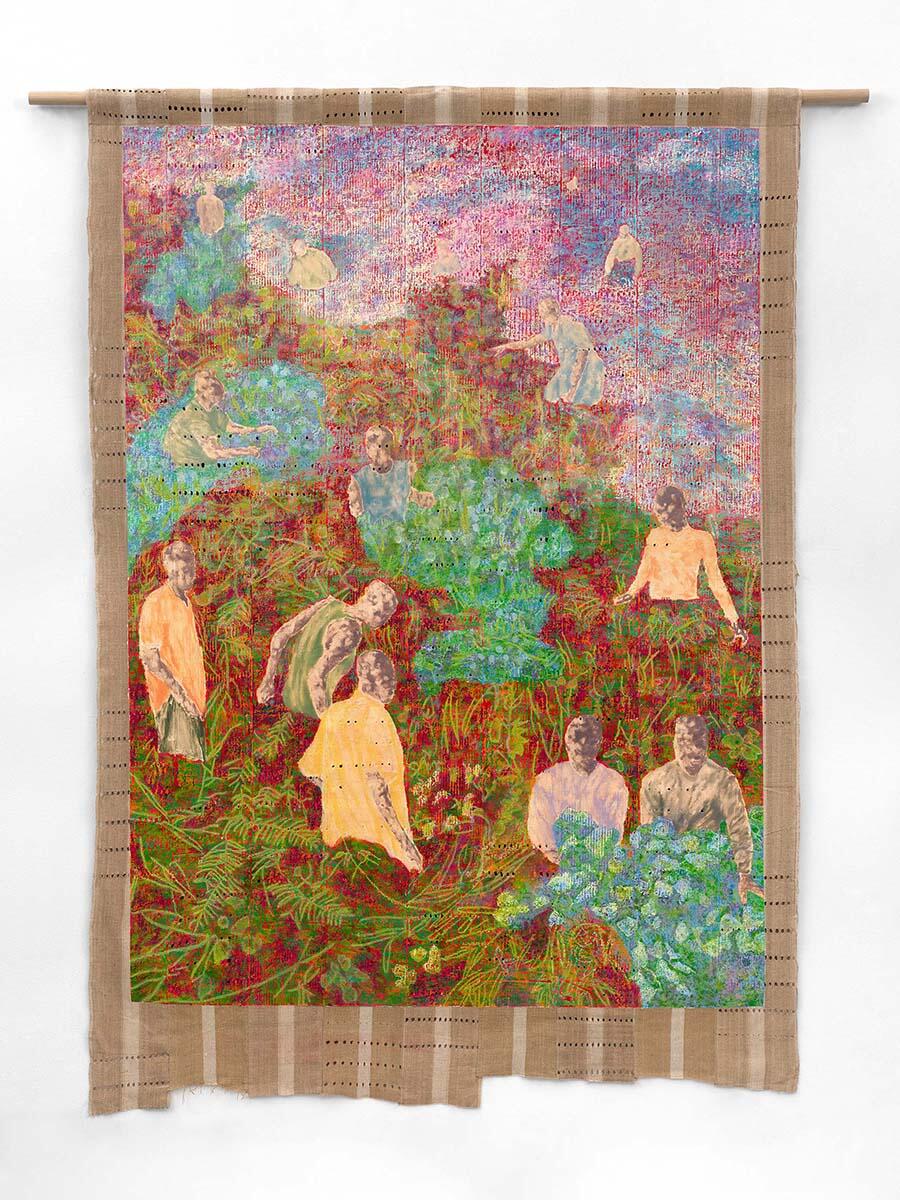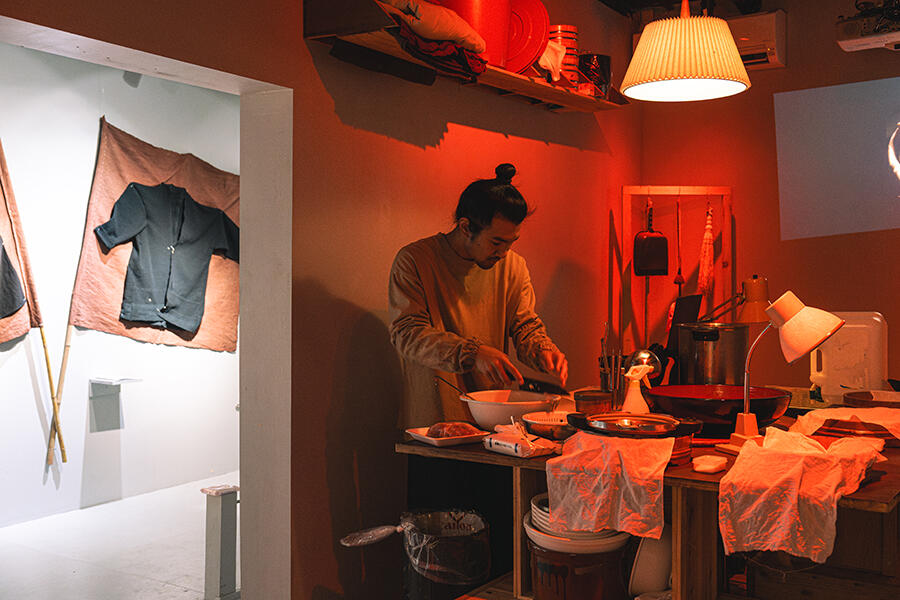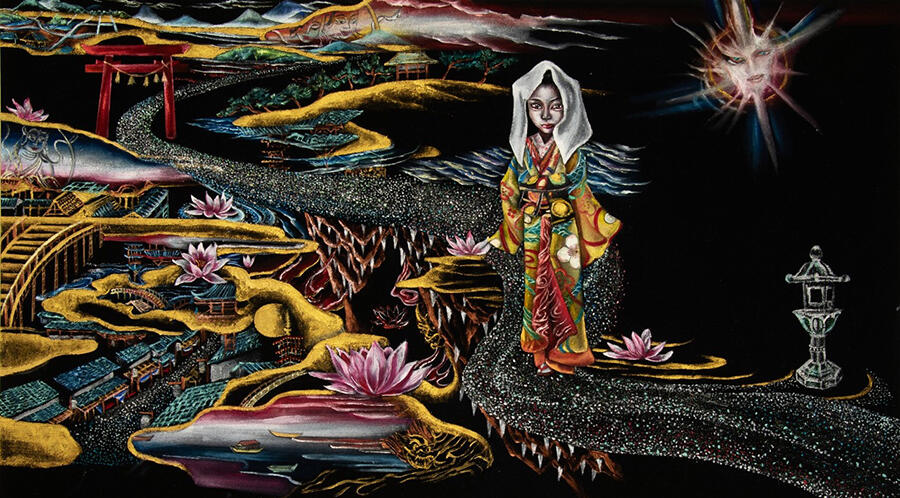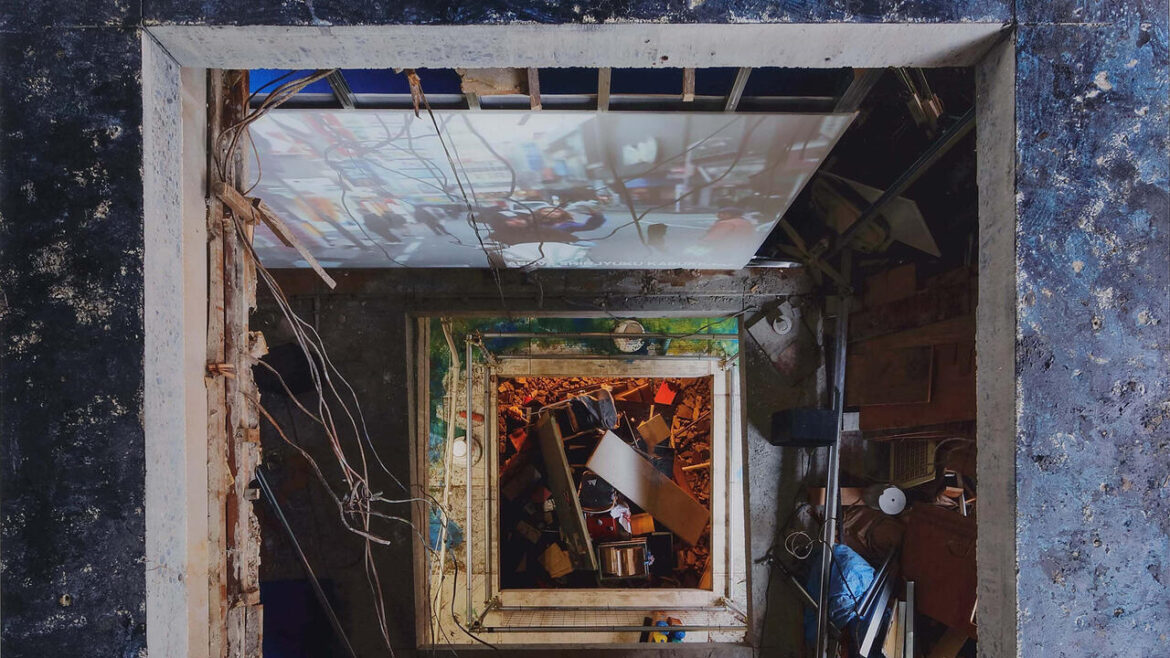The Clearing | space Un | 3 November – 26 December

Nengi Omuku, Along Fern River, 2025. Courtesy: space Un Tokyo
As market interest in African art takes off, a growing number of spaces and exhibitions are working to understand the cultural entanglements between the continent and East Asia. In Tokyo, space Un is at the forefront of this vital movement. For Art Week Tokyo, they are presenting a selection of rising painters from the diaspora, curated by British writer Ekow Eshun. The show borrows from the universe of writer Toni Morrison to orient itself, evoking the image of the forest clearing from her masterpiece Beloved (1987) to carve out space for Black community. The canvases of London-based painter Okiki Akinfe see Black bodies overflow into space and luxuriate in syrupy sensuality. Meanwhile, Sola Olulode – who, like Akinfe, is of British-Nigerian descent – imagines dew-drenched landscapes as a seemingly infinite realm of intimacy and care. The exhibition will host a discussion of the politics of representing Black diaspora during Art Week Tokyo on 6 November.
Yuta Geshi | Decameron | 14 October – 9 November

Yuta Geshi, ‘Preparing the Miso’, performance view, 2025. Courtesy: Decameron Gallery
Yuta Geshi lives his life in public. From the craft miso he brews daily, to the clothes he tailors, to the furniture he makes from scratch, his practice is one that demands attention be paid to the mundane rituals of everyday life. Amid an increasingly optimized present – and an uptick in services designed to relegate the labour of living to the background of our lives – ‘What’s Entertainment?’ offers up a selection of photographs, sculptures and participatory performances that catalogue his painstaking commitment to living. At his miso-making-cum-listening-parties, the artist, restauranteur and DJ invites us to revel in the simplest instances of making life happen. His final Preparing the Miso performance falls in the midst of Art Week Tokyo, on 7 November. The artist is set to infuse the energy of historic Kabukicho – the legendary nightlife district that Decameron calls home – into the rhythms of everyday life.
Chim↑Pom from Smappa!Group | Anomaly | 11 October – 9 November

Chim↑Pom from Smappa!Group, ‘A Hole within a Hole within a Hole’, 2025, exhibition view. Courtesy: Anomaly
The last time we saw Chim↑Pom from Smappa!Group at Anomaly was in 2022, when their show served as a cheeky addendum to their retrospective at the Mori Art Museum. That exhibition at the Mori whipped up controversy when the collective changed its name in defiance of the museum’s refusal to accept sponsorship from the ‘off-colour’ Smappa!Group – an operator of bars and host clubs. This time around, ‘A Hole within a Hole within a Hole’ brings together work they’ve made in the intervening years, tightening their lens on the urban environments that have inspired much of their output. The gathered works all pry into hidden spaces of the city; peeking through cracks in desolate buildings to excavate the surprises within. A sculptural video work, Asshole of Tokyo (2025), simultaneously takes us spelunking in the city sewers while also refreshing the collective’s claim on the title enfant terrible of the Japanese scene – a title they retain, even some 20 years since their formation.
Moon Kyungwon & Jeon Joonho | SCAI The Bathhouse | 5 November – 31 January

Moon Kyungwon & Jeon Joonho, Phantom Garden, 2024–25, still image, dimensions variable. Courtesy: © Moon Kyungwon & Jeon Joonho, courtesy SCAI The Bathhouse
Continuing their decades-long collaboration, Korean artist duo Moon Kyungwon & Jeon Joonho present the latest instalment in their speculative opus, ‘News from Nowhere’ (2012–ongoing) – which debuted at dOCUMENTA way back in 2012. Landing at SCAI The Bathhouse at the tail end of a Tokyo summer that dragged all the way into October, a selection of works departing from the pair’s timely project ‘Phantom Garden’ (2024–25) consider the (increasingly likely) prospect of a world where countries like Japan lose their autumns and springs. It’s a project that will inevitably blur the lines between speculation and documentation; though it may look like sci-fi now, it could well become an archival document, just a trace of the cycle of the seasons as we know them. A selection of Kyungwon and Joonho’s solo works will be on display as a complement to the show at the gallery’s satellite space, SCAI Piramide.
Natsuki Tanihara | Multiply Encoded Messages | 11–24 November

Natsuko Tanihara, Ohatsu’s pilgrimage – Nakanoshima Bunraku 2025, Sonezaki Shinju (the Love suicide at Sonezaki), 2025, oil and glitter on velvet, 43 × 73 cm. Courtesy: © Natsuko Tanihara, courtesy of MEM Tokyo
In 2024 and 2025, Japanese artist Natsuko Tanihara was invited to envision the world of Bunraku, a style of traditional Japanese puppet theatre, by creating stage paintings for the Nakanoshima Bunraku showcase held annually in Osaka. She produced a fitting complement to the precise, ancient art form: her vividly garish compositions feature pained, twisted expressions that puppets cannot make, as they cry big, juicy tears that puppets cannot cry. In the process, the painter of the feminine macabre fell in love with the romantic legends of shinjū, double suicides committed by couples seeking sanctuary for their love in the afterlife. In ‘Love Suicide’ at MEM, the artist presents original Bunraku scenography alongside new, large-scale work: the result of her exploration of such tragic lovers’ pacts. Painted on her signature black velvet, glowing historic vistas are cut through with a sinister, modern edge – like the deliberate incision of a lover’s blade.
Metal | Ginza Maison Hermès Le Forum | 30 October – 31 January

Chu Enoki, RPM-1200, 2006–20, steel, dimensions variable. Courtesy: © Chu Enoki, courtesy Anomaly; photograph: Ichiro Mishima
In an exhibition that salivates over the figure of the blacksmith swinging a big hammer over hot iron, Ginza Maison Hermès Le Forum has invited three artists to consider the material and cultural implications of metalwork across the ages. The show coincides with the launch of the book Savoir & Faire: Metal (Iwanami Shoten, 2025), the latest in an ongoing series of texts that celebrate craftsmanship that prioritizes natural materials. Paintings by French artist Élodie Lesourd riff on the clash of materiality and aesthetics within metal music, while Japanese artist Chu Enoki twists scrap steel into stark and imposing hoards of objects – equal parts weapon of the past and city of the future. Producer and director Maiko Endo brings the topic home with films that consider materials like mercury, which feature in traditional Japanese lacquerware.
Prism of the Real: Making Art in Japan 1989–2010 | National Art Center Tokyo | 3 September – 8 December
‘Prism of the Real: Making Art in Japan 1989–2010’, 2025, exhibition view. Courtesy: National Art Center Tokyo
In a bold take on the historical survey, the National Art Center Tokyo narrows its focus to the two decades leading up to, and spiralling out from, the Y2K era – a stretch marked by daring and stylish leaps forward in the realm of Japanese contemporary art and its influence. Curated in collaboration with M+ in Hong Kong, the three chapters of the exhibition cleverly weave together insights into a rapidly developing Japan, and responses from a world hastily changing around it. Fantastic offerings like Koizumi Meiro’s excruciating takedown of nationalism, Portrait of a Young Samurai (2009) – somehow both harrowing and camp – viscerally grapple with the anxieties and aspirations at the heart of modern society. The result is a show that precisely clocks the temperature of issues simmering under the skin of contemporary Japanese politics, even as it looks back with nostalgia at defining works from this century’s first act.
Main image: Chim↑Pom from Smappa!Group, Build-Burger / So see you again tomorrow, too? (detail), 2018, Lambda print mounted on aluminum, 1.2 × 1.2 m. Courtesy: Anomaly


AloJapan.com